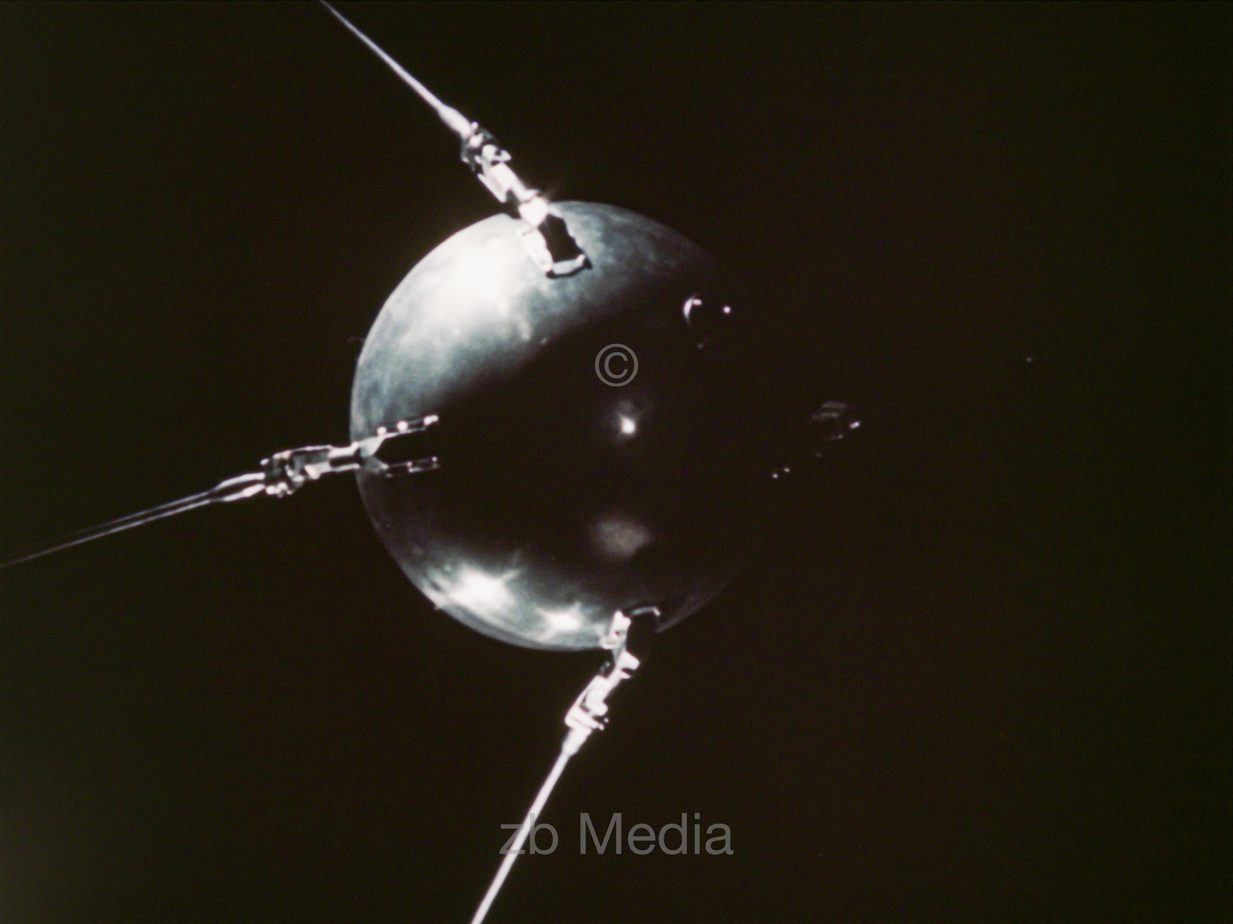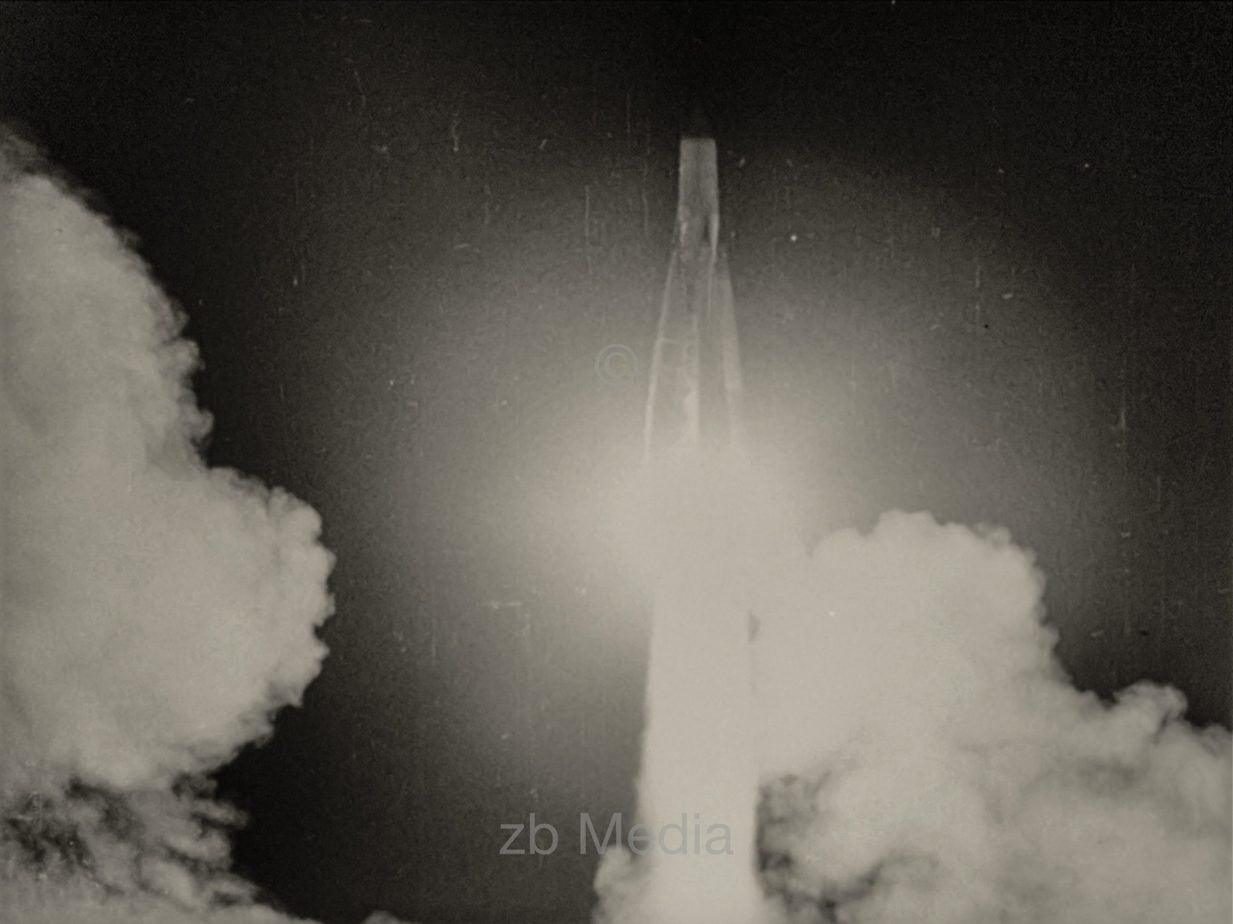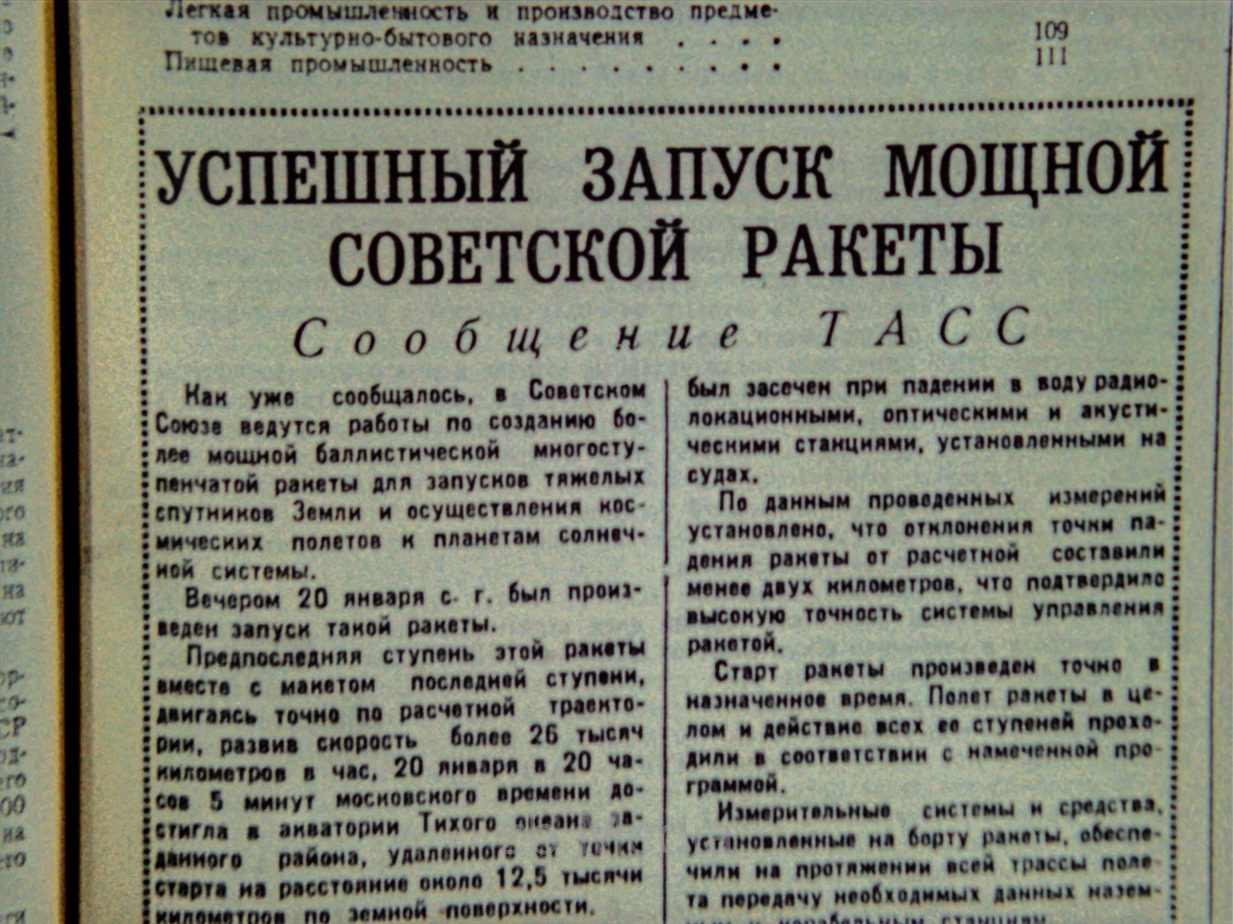
Sputnik 1 – Original footage from the beginning of space travel in 1957


TASS Announcement, Pravda 5 October 1957. Foto: Historiathek
On 4 October 1957, the space age began: with Sputnik 1, the Soviet Union launched the first artificial satellite into Earth orbit – an event that caused a worldwide sensation and went down in history as the Sputnik shock.
For your production, we offer exclusively licensable original footage of the historic launch – digitised in brilliant 2K quality.
Unique film about the space race
These unique images show the beginning of the “space race” between East and West and convey the technological and political prestige of an entire era. Sputnik’s beeping radio signals went around the world – and thanks to these authentic scenes, your viewers can also experience this historic moment first-hand.
Possible uses:
Documentaries and TV productions
Cinema features and exhibitions
Streaming formats with historical context
Availability:
High-quality 2K scan
Licensing for cinema, TV and digital platforms
Rely on authentic archive material that brings the beginning of space travel history to life – and secure the rights to one of the iconic moments of the 20th century.
Photos also available
In addition to the film footage, historical photos of Sputnik 1 are also available.
The images can be licensed for all types of use – both editorial (e.g., in articles, documentaries, or blogs) and promotional (e.g., in print products, campaigns, or online promotions).
Historical background of the film footage and photos
Sputnik 1 – Milestone in space travel and scientific significance
On October 4, 1957, the Soviet Union launched Sputnik 1, the first artificial satellite into Earth orbit, ushering in a new era: the space age.
Although Sputnik 1 was technically very simple—essentially a polished metal sphere with a radio transmitter—the flight provided important scientific data. By slowing down its orbit, conclusions could be drawn about the density of the upper atmosphere. Similarly, analysis of the radio signal transmission allowed conclusions to be drawn about ionospheric conditions.
The success of Sputnik 1 had far-reaching political and technological consequences. It shattered the technological self-image of many countries, especially the US, and intensified the race for rocket and space technology — the so-called Space Race.
In the United States, the Sputnik shock led to a reorientation: Congress passed a package of measures to promote science and technology (e.g., the National Defense Education Act). In addition, the National Aeronautics and Space Administration (NASA) was founded in 1958 to advance American space travel. Roger D. Launius writes more about this for NASA here.
Dr. Launius, a fellow of the American Institute for Aeronautics and Astronautics, describes how the head of the American Vanguard satellite program, Dr. John P. Hagen, was surprised by the news of the successful launch at the Soviet Embassy’s invitation in Washington on October 4. At the time, Vanguard was in danger of failing, and the budget had already been exceeded.
The launch of Sputnik 1 was not just symbolic politics: the method used to track its signals made it possible to use satellite data for positioning at an early stage — a step toward satellite navigation, as in the TRANSIT system, a precursor to today’s GPS.
The Soviet agency TASS reported in 1957:
The original TASS report on Sputnik 1 (5 October 1957)
On 5 October 1957, one day after the launch, TASS published a soberly worded report that was reprinted in Pravda. (see photo). The text objectively conveys the most important facts of the event:
“For a number of years in the Soviet Union scientific research and experimental design work have been conducted toward the creation of an artificial earth satellite.
As has already been announced in the press, the first satellite launches in the USSR were planned for implementation in accordance with the program of scientific research of the International Geophysical Year.
As a result of this great intensive labor of scientific research institutes and design offices the first artificial satellite in the world was created. On 5 October 1957, in the USSR, a successful launch of the first satellite was carried out. According to preliminary data, the rocket imparted to the satellite the necessary orbital speed of nearly 8,000 meters per second. At the present time, the satellite is making an elliptical trajectory around the earth, and its flight can be observed in the rays of the rising and setting sun with the help of the simplest optical instruments (binoculars, telescopes, etc.).
The satellite has the form of a globe of 58 cm. diameter and weighs 83.6 kg. In it have been placed two radio transmitters, continually emitting radio signals at frequencies of 20.005 and 40.002 megahertz… Powerful transmitters insure good reception of radio signals to a wide circle of ham operators. The signals appear as telegraph messages with the length of almost 0..3 seconds, with a pause of the same length. The broadcast at one frequency occurs at the time of the pause of the signal at the other frequency.
Scientific stations, located in different parts of the Soviet Union, are conducting observations of the satellite and are plotting its trajectory. Inasmuch as the density of the rarefied upper layers of the atmosphere is sufficiently unknown, at the present time there are no data for the precise determination of the life of the satellite and the place of its entry into the dense layers of the atmosphere. Calculations have shown that as a result of the great speed of the satellite at the end of its existence it will burn up upon reaching the upper layers of the atmosphere at an altitude of several dozen kilometers.
In Russia at the end of the nineteenth century it was by the work of the prominent scientist K. E. Tsiolkovskii that the scientifically based possibility of achieving cosmic flight with the assistance of rockets was first established.
The successful launch of the first man-made earth satellite brings about a most important contribution to the storehouse of world science and culture. A scientific experiment accomplished at such a great altitude has enormous meaning for the understanding of properties of the cosmic expanses and the study of the earth as a planet of our solar system.
During the International Geophysical Year, the Soviet Union intends to accomplish the launch of several more artificial earth satellites. These subsequent satellites will have an increased size and weight and through them will be conducted a wide program of scientific research.
Artificial satellites of the earth pave the way to interplanetary travel, and apparently our contemporaries are fated to be witnesses to the fact that liberated and politically conscious labor of the people of the new socialist society makes reality of the most daring dreams of mankind.”
Original Source: Pravda, 5 October 1957, p. 1 Source: Vladimir Wozniuk, ed., Understanding Soviet Foreign Policy: readings and documents (New York: McGraw-Hill, 1990), p. 144.
I also showed the Sputnik launch in my film “Secrets of Soviet Technology” with original historical footage from the Moscow Technology Archive. The film was very successful on the ZDF-Info channel, with 55 broadcasts. More than a million people have watched the film on YouTube. See here in the ZDF media library.
Stephan Bleek
About Stephan Bleek
Stephan holds a doctorate in contemporary history from the University of Munich. He worked for around 20 years as a documentary film director for Bayerischer Rundfunk and other ARD broadcasters before founding the online footage archive Framepool in 2001. He left Framepool in 2017 and directed several documentaries for ZDF. He works in the field of film and photography and writes about contemporary history topics.

